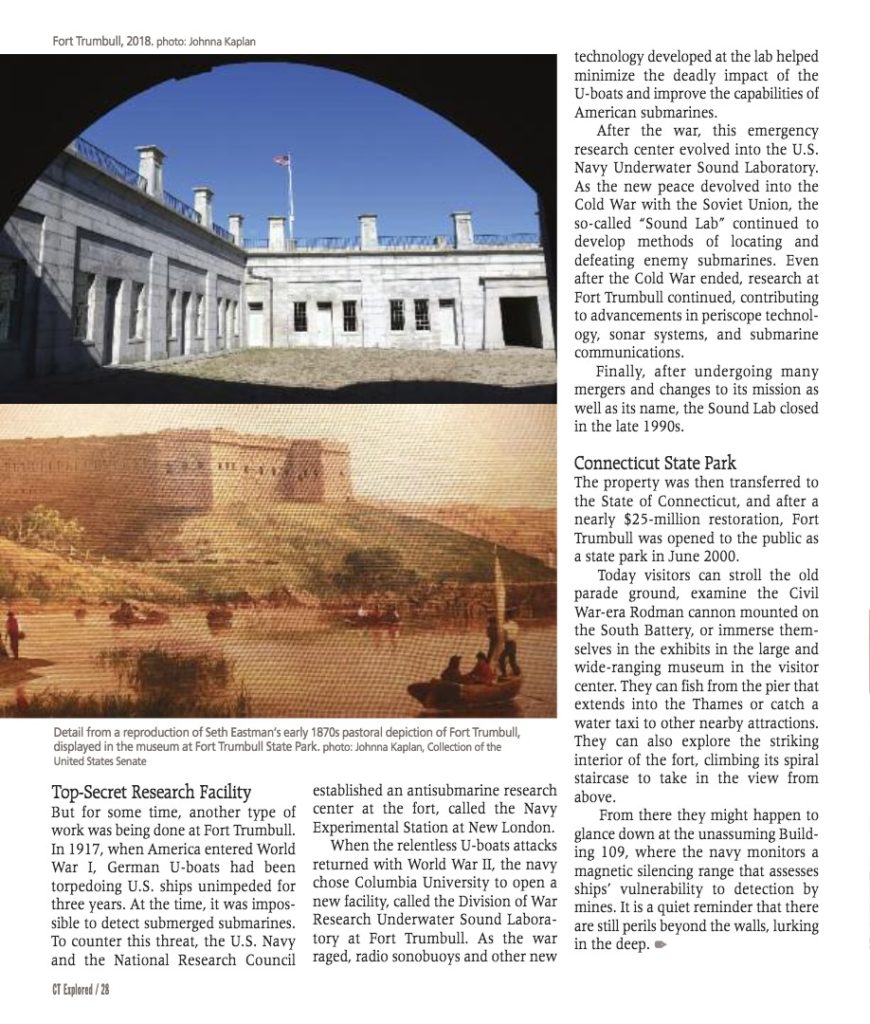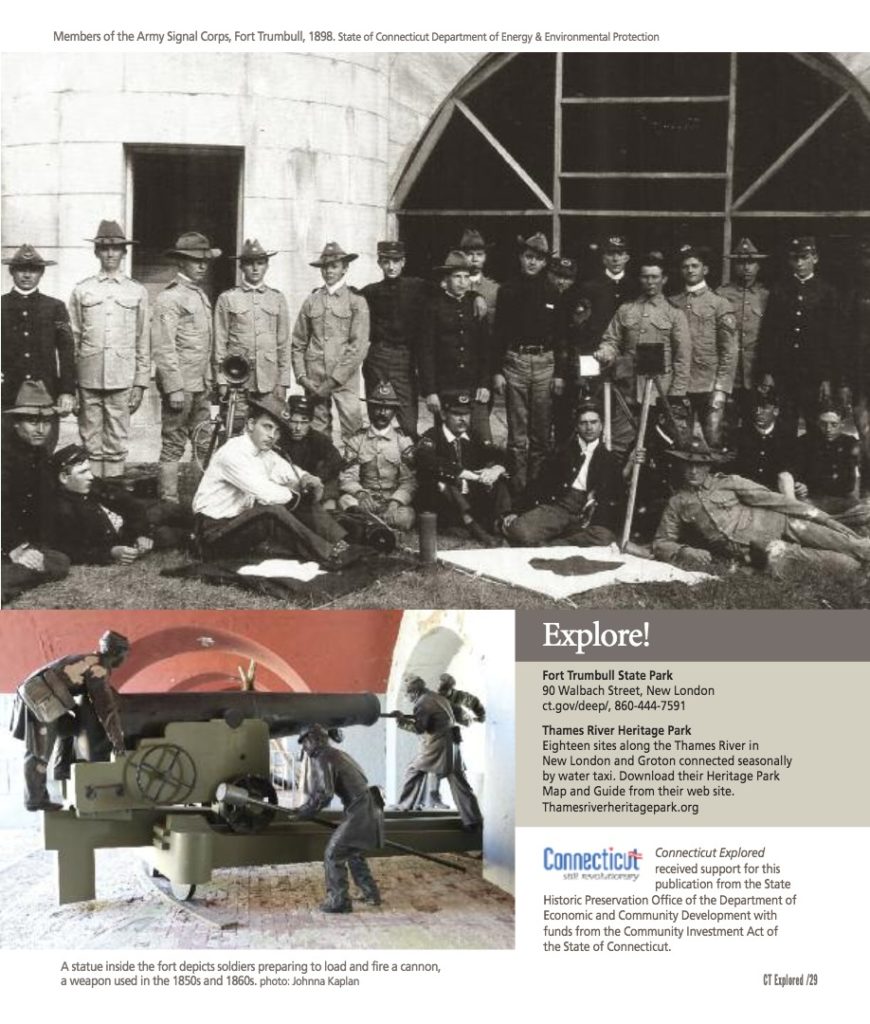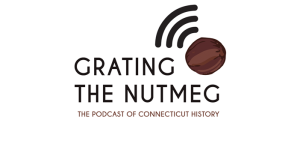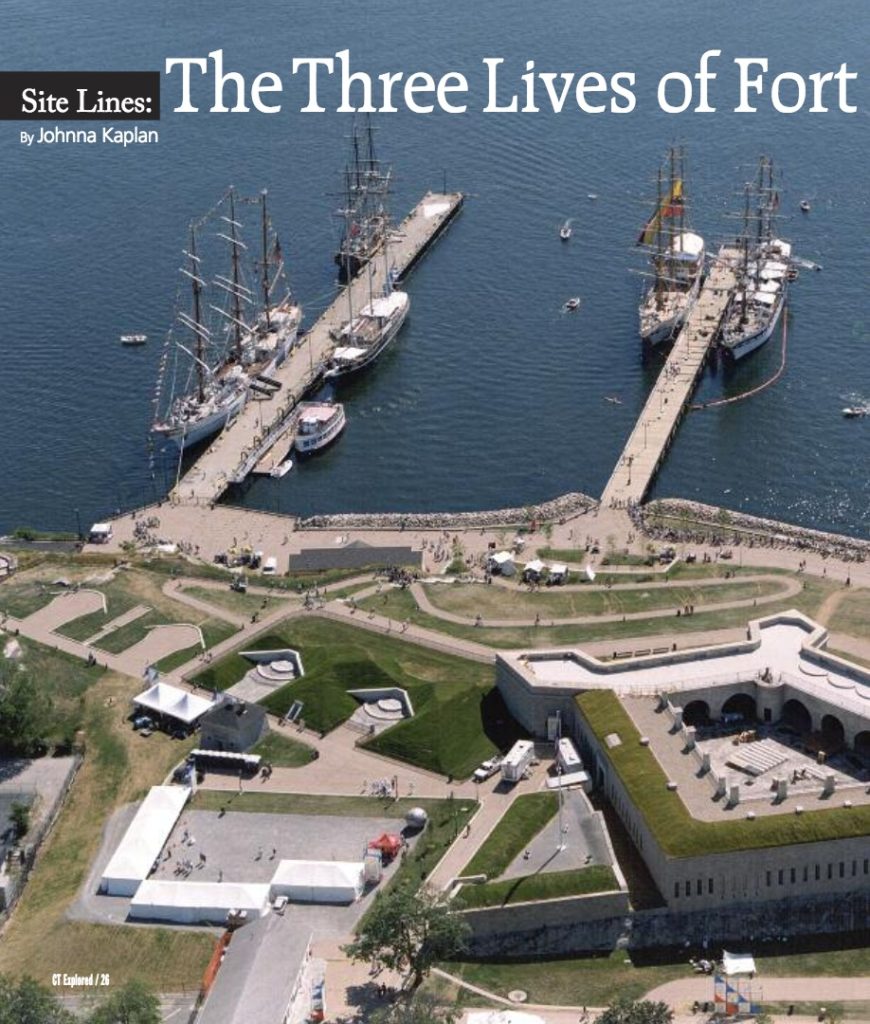(c) Connecticut Explored Inc. Spring 2019
Subscribe/Buy the Issue!
The east coast of the United States is dotted with the imposing remains of 19th-century Third System forts. Today, these sites are a paradox: tranquil recreation areas made possible by centuries of war. Fort Trumbull, on the Thames River in New London, exemplifies this contrast. Now a state park with manicured grounds, walking paths, and a gift shop, its centerpiece—the striking Egyptian revival-style fortification—might seem like nothing more than an architectural curiosity.
However, Fort Trumbull’s unique role in Connecticut’s history makes it impossible to ignore the memories that still linger here.
A Series of Forts
The first fort built on this promontory above the Thames was a simple structure. Completed in 1776, it was strategically located in New London, a wartime supply hub and center of Revolutionary War activity. But it was no match for Benedict Arnold’s devastating 1781 raid on the city.
 Fort Trumbull was upgraded in the 1790s as part of the new nation’s First System of fortifications. A stout blockhouse, the oldest building at the fort, is the only remaining relic of this era.
Fort Trumbull was upgraded in the 1790s as part of the new nation’s First System of fortifications. A stout blockhouse, the oldest building at the fort, is the only remaining relic of this era.
When the U.S. Congress ordered a Second System of forts in anticipation ofthe War of 1812, Fort Trumbull was rebuilt again. During that war, the British blockaded New London Harbor, but the city eluded attack.
Shortly thereafter, plans were made for a Third System of coastal fortifications. Meant to repel foreign invaders, these structures would instead face a domestic threat. When the Civil War began, the new Fort Trumbull, with its massive walls of Waterford granite, served as a Union Army recruitingcenter. (Mark Twain’s A Curious Experience, set at the fort, hints at the wartime tensions that pervaded even peaceful Northern communities.)
After a stint as a supply post, Fort Trumbull became, in 1915, the first U.S. Coast Guard Academy—and, soon after, a base for a Prohibition-era Coast Guard division hunting rum-runners on Long Island Sound.The academy moved to its current location in 1932, but the coast guard used Fort Trumbull as a training facility until the 1940s.
During World War IIFort Trumbullhoused the U. S. Maritime Service Officer Candidate School. After the war, as the G.I. Bill fueled a rise in college enrollment, a campus of the University of Connecticut opened at the fort.
Top-Secret Research Facility
But for some time, another type of work was being done at Fort Trumbull. In 1917, when America entered WWI, German U-boats had been torpedoing U.S. ships unimpeded for three years. At the time, it was impossible to detect submerged submarines. To counter this threat, the U.S. Navy and the National Research Council established an antisubmarine research center at the fort, called the Navy Experimental Station at New London.
When the relentless U-boats attacks returned with World War II, the navy chose Columbia University to open a new facility, called the Division of War Research Underwater Sound Laboratory at Fort Trumbull. As the war raged, radio sonobuoys and other new technology developed at the lab helped minimize the deadly impact of the U-boats and improve the capabilities of American submarines.
 After the war, this emergency research center evolved into the U.S. Navy Underwater Sound Laboratory. As the new peace devolved into the Cold War with the Soviet Union, the so-called “Sound Lab” continued to develop methods of locating and defeating enemy submarines. Even after the Cold War ended, research at Fort Trumbull continued, contributing to advancements in periscope technology, sonar systems, and submarine communications.
After the war, this emergency research center evolved into the U.S. Navy Underwater Sound Laboratory. As the new peace devolved into the Cold War with the Soviet Union, the so-called “Sound Lab” continued to develop methods of locating and defeating enemy submarines. Even after the Cold War ended, research at Fort Trumbull continued, contributing to advancements in periscope technology, sonar systems, and submarine communications.
Finally, after undergoing many mergers and changes to its mission as well as its name, the Sound Lab closed in the late 1990s.
Connecticut State Park
The property was then transferred to the State of Connecticut, and after a nearly $25 million restoration, Fort Trumbull was opened to the public as a state park in June 2000.
Today visitors can stroll the old parade ground, examine the Civil War-era Rodman cannon mounted on the South Battery, or immerse themselves in the exhibits in the large and wide-ranging museum in the visitor center. They can fish from the pier that extends into the Thames or catch a water taxi to other nearby attractions. They can also explore the striking interior of the fort, climbing its spiral staircase to take in the view from above.
From there they might happen to glance down at the unassuming Building 109, where the navy monitors a magnetic silencing range that assesses ships’ vulnerability to detection by mines. It is a quiet reminder that there are still perils beyond the walls, lurking in the deep.
Johnna Kaplan is a freelance writer. She lives in New London and can be found online at thesizeofconnecticut.com. She last wrote “Three Thriving Historic General Stores,” Summer 2017.
Explore!
Fort Trumbull State Park
90 Walbach Street, New London
ct.gov/deep/, 860-444-7591
Thames River Heritage Park
Eighteen sites along the Thames River in New London and Groton connected seasonally by water taxi. Download their Heritage Park Map and Guide from their web site.
Thamesriverheritagepark.org
 Listen to our Grating the Nutmeg podcast episode about Fort Trumbull with Johnna Kaplan, Episode 68.
Listen to our Grating the Nutmeg podcast episode about Fort Trumbull with Johnna Kaplan, Episode 68.
 Connecticut Explored received support for this publication from the State Historic Preservation Office of the Department of Economic and Community Development with funds from the Community Investment Act of the State of Connecticut.
Connecticut Explored received support for this publication from the State Historic Preservation Office of the Department of Economic and Community Development with funds from the Community Investment Act of the State of Connecticut.

